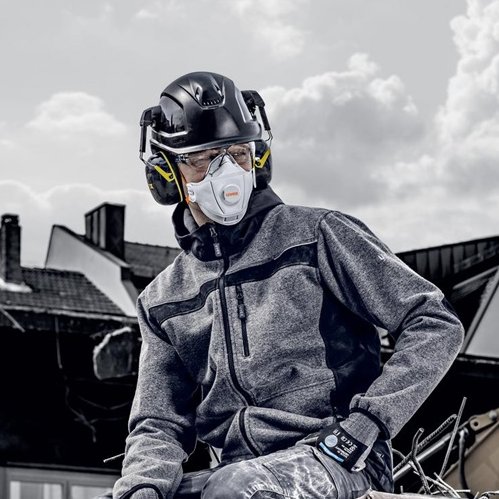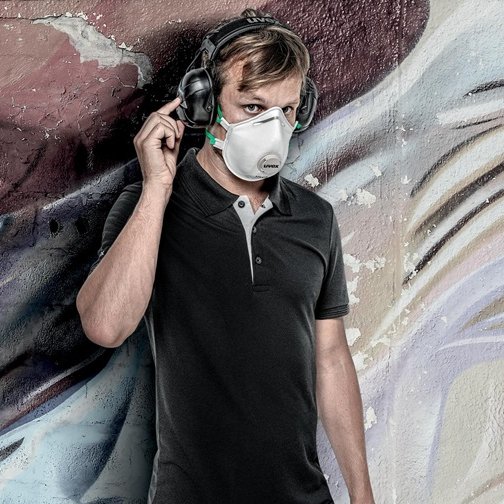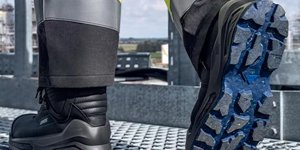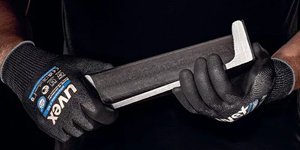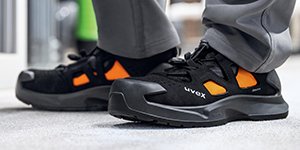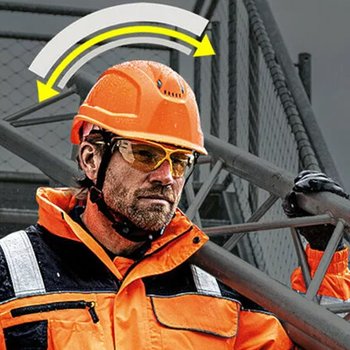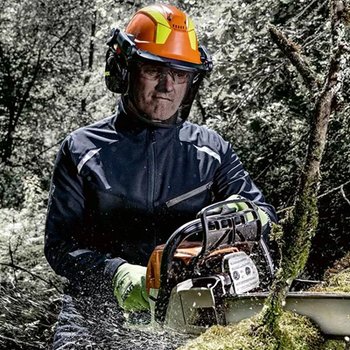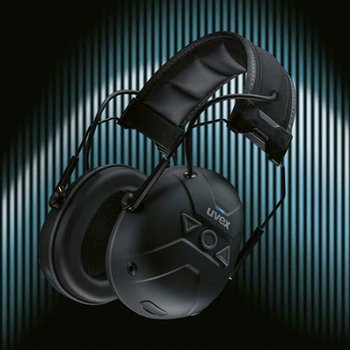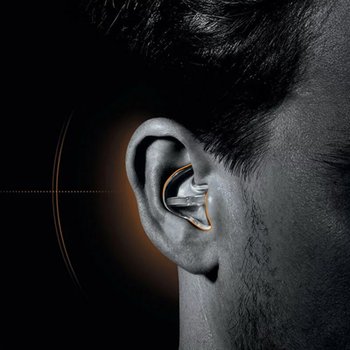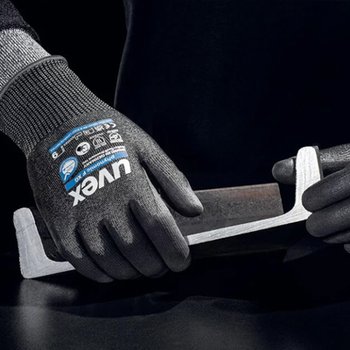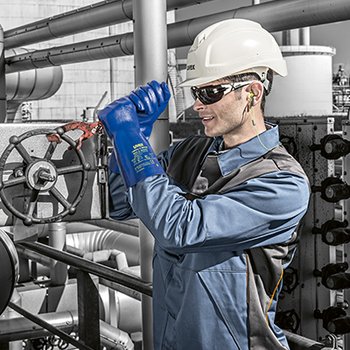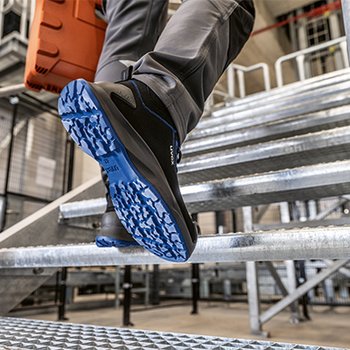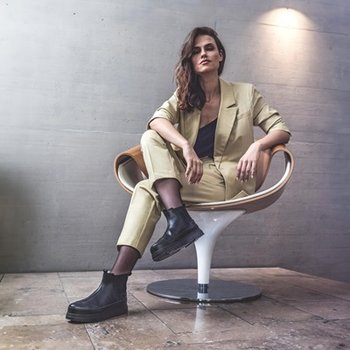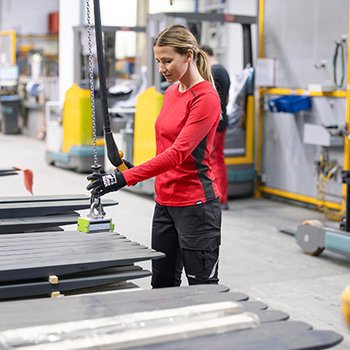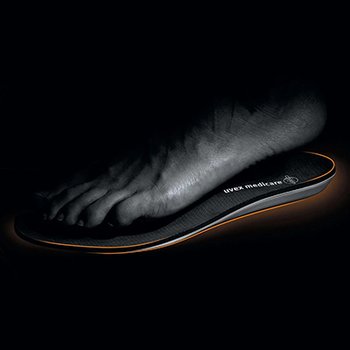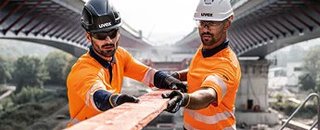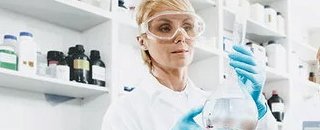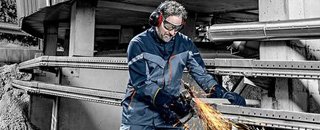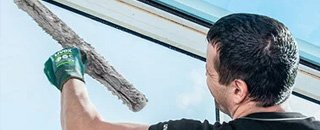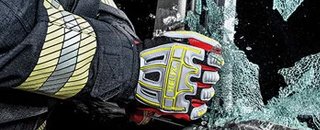
FFP2 masks – Safe from droplets and aerosols
FFP2 masks have become an indispensable part of our everyday lives - at least since the COVID 19 pandemic. They can reliably protect against harmful particles. But how do they work and how do you have to wear them to get the highest protection? Here you can find out everything you need to know about FFP2 respirators.
What are FFP2 masks?
FFP2 masks provide reliable protection against solid and liquid dusts, smoke and aerosols that are harmful to health. They filter at least 94% of these hazardous particles and can be used in areas where pollution levels are up to ten times higher than the permissible occupational exposure limit (OEL*). The total leakage must also be a maximum of 11%.
These masks not only protect against short-term irritation of the respiratory tract, but also protect you from damage to the lung tissue in the long term by filtering fibrogenic particles. FFP2 masks from uvex are labelled in a striking orange so that you can immediately recognise the appropriate level of protection.
*OELs = The occupational exposure limit values (OELs) are the average concentration of a substance in the air in the workplace, up to which no damage (chronic or acute) is to be expected if employees work there for eight hours a day for five days a week. The OELs replace the maximum workplace concentration (MWC) and the technical reference concentration (TRC) – however, as long as both of these values are not yet fully taken into account in the OELs, they can still be used on an interim basis for assessing risks in the workplace.
Infobox: What does total leakage mean for respirators?
The total leakage of a respirator describes how much air enters through the mask from the outside. It is caused by filter passage and leaks on the face and nose. However, due to their orientation towards the human anatomy, uvex respirators largely avoid this leakage.
All FFP2 models
How to recognize FFP2 masks
FFP masks must meet the European standard EN149:2001+A1:2009. This means that they are tested for filter performance, breathing resistance and tightness. When buying, be sure to look for the CE mark and the four-digit numerical code that confirms that the mask is officially certified. This way you can be sure that you are optimally protected. uvex respirators naturally comply with the applicable standard.
What is an FFP2 mask suitable for?
The FFP2 mask is the perfect protection against harmful particles and aerosols. It filters 94% of pollutants from the air, making it ideal for situations where you need to protect yourself from hazardous substances. Whether in industry when dealing with dust, mist, smoke or in the medical sector, where it protects against viruses such as the coronavirus - the FFP2 mask guarantees you occupational safety, self-protection and protection of others. But be careful: protection from others is only guaranteed if the mask does not have an exhalation valve.
In particular, FFP2 masks are used in the following areas, for example:
- Industrial: Ideal for working with dust, mist or harmful particles.
- Medicine: Indispensable in the fight against viruses such as the coronavirus. Here, the mask provides not only self-protection, but also protection of others - especially important in contact with patients.
- Protection against odors: Thanks to a carbon layer, FFP2 masks can also protect against unpleasant odors.
At uvex you will find FFP2 masks with and without valves. A valve on the mask reduces breathing resistance and is particularly suitable in high temperatures or when you have to wear the mask for a long time without interruption. However, please note that a mask with a valve does not guarantee any protection for others, as the used and possibly contaminated with pollutants breath enters the ambient air through the valve.
When do you have to wear an FFP2 mask?
You should wear an FFP2 mask if you need to protect yourself from harmful particles, dusts, smoke or aerosols. Especially in environments where these substances are in the air - for example on construction sites, in workshops or in industry - the FFP2 mask provides the necessary protection. The mask is also indispensable in medical facilities or in close contact with many people to protect against infectious aerosols.
How long can I wear an FFP2 mask?
FFP2 masks are designed to last a maximum of 8 hours. If the mask becomes damp on the outside or the breathing resistance increases noticeably, you should definitely change it.
By the way: In principle, FFP2 masks are intended for single use. uvex also offers special reusable masks – you can recognise them by the "R" symbol (reusable).
How long can you work with an FFP2 mask?
An FFP2 mask may usually be worn for up to 8 hours, i.e. for one working day. However, it is important that you change the mask as soon as it becomes damp on the outside or the breathing resistance increases noticeably. If you wear the mask for a long time, you should plan regular breaks to relieve the respiratory tract. Make sure to replace the mask after one working day at the latest or if it is clearly soiled to ensure consistent protection.
As far as the length of the wearing breaks is concerned, you should use these values as a guide:
- Masks without valve: After wearing them for 75 minutes, you should take a 30-minute break.
- Masks with valve: A 30-minute break should be taken here after 150 minutes of wear.
The right fit - How to wear your FFP2 mask
To ensure that your FFP2 mask provides the best possible protection, the right fit and fit are crucial. Keep the following points in mind:
- Tight fit: The mask must fit snugly against the face, especially over the mouth, nose and chin, without gaps through which air could escape. Thanks to the practical nose clips, the uvex respirators can be flexibly adapted to your facial anatomy.
- Test airflow: Check the seat by inhaling. If air escapes at the edges, the mask is not tight enough.
- Beard wearers: A beard impairs the tightness of the mask. Therefore, the beard should be shaved so as not to reduce protection.
- For spectacle wearers: Make sure you have the right combination of glasses and masks to prevent the lenses from fogging up.
In our fit test for respirators, you can also find out how your mask should fit optimally.
Tip for wearing: Avoid touching the mask while wearing it, as this can impair the protective effect.
How do FFP2 masks protect against COVID infection?
FFP2 masks provide protection against COVID infection because they filter both droplets and aerosols – the main transmission routes of the virus. Compared to traditional masks, such as surgical masks, FFP2 masks filter at least 94% of the particles from the air you inhale and exhale. This means that you are not only protecting yourself, but - if the mask does not have an outlet - also the people around you. Especially in closed rooms and in close contact with other people, FFP2 masks reduce the risk of infection to a minimum - provided they sit correctly and close to the face.
FFP2 masks at uvex
In our online shop you will find a wide selection of FFP2 masks in high quality that are perfectly tailored to your needs - whether for industry or the medical sector. If you have any questions, our expert advisors will be happy to assist you. Buy your new protective masks now and do not hesitate to contact us!
Still haven't found the right one for you?
Find out more about uvex respiratory protection.
